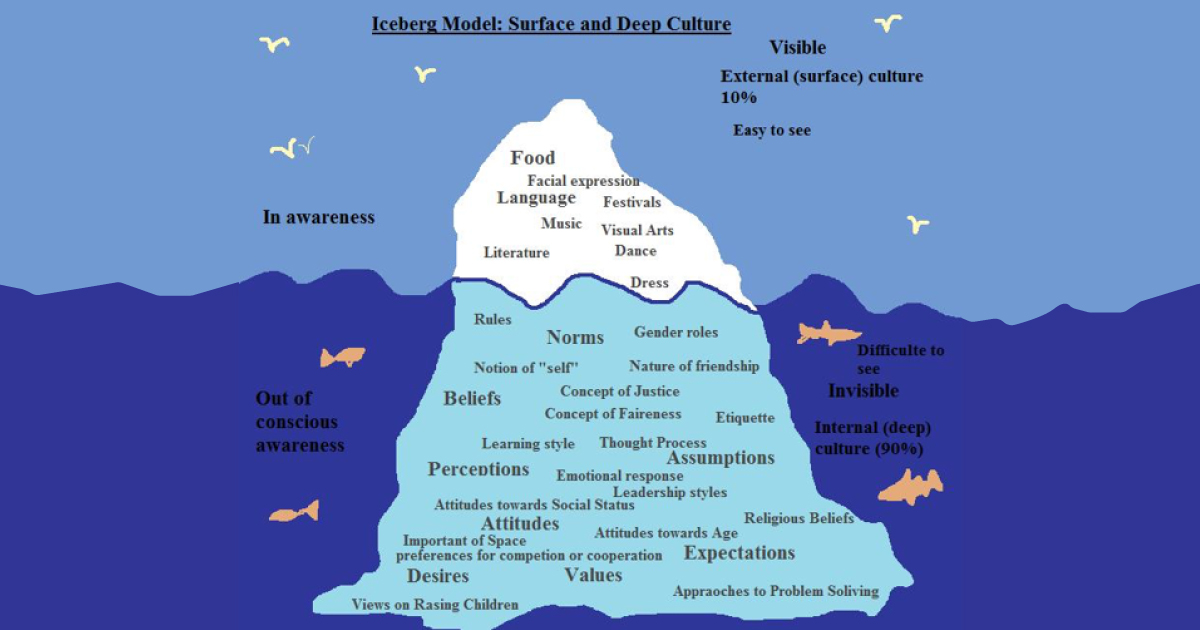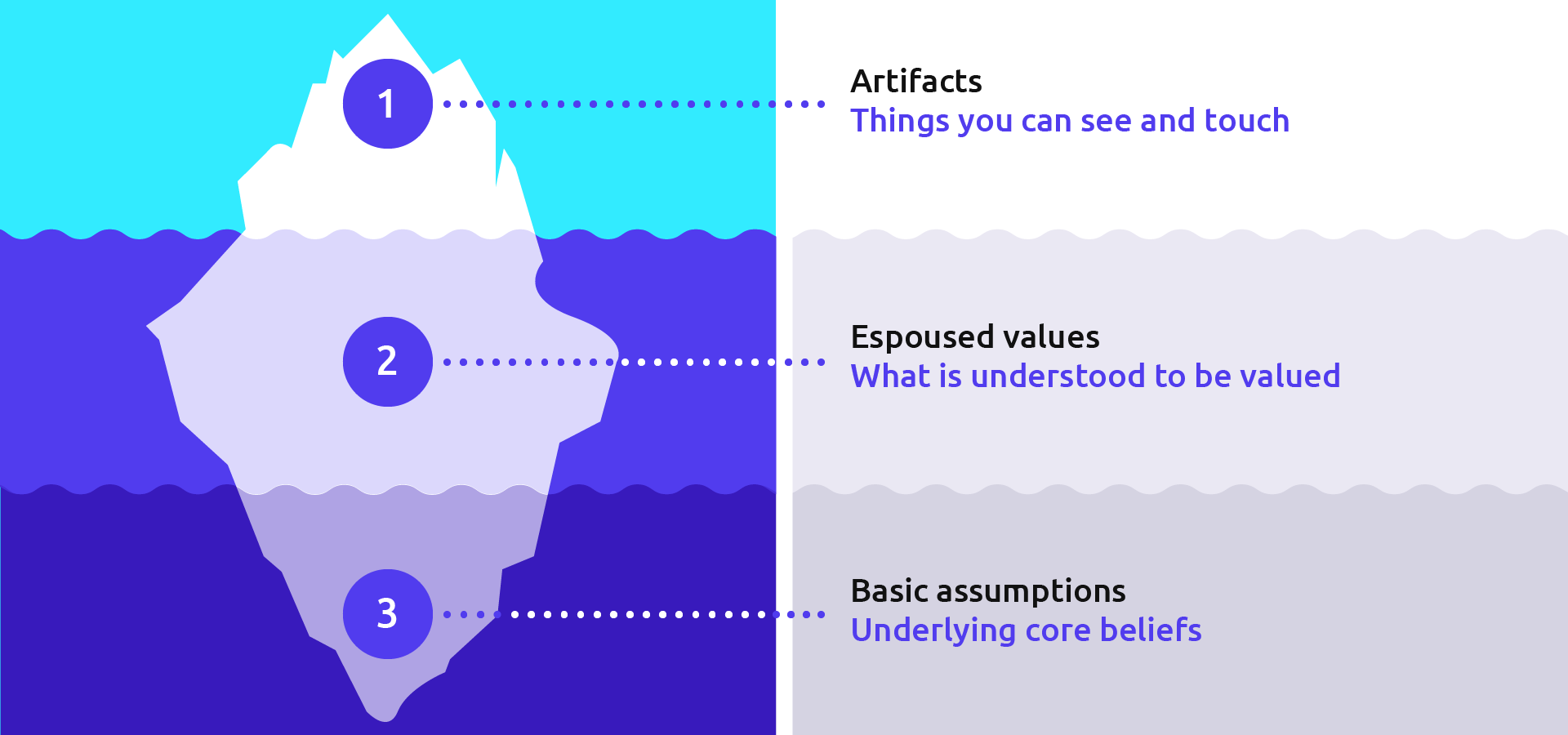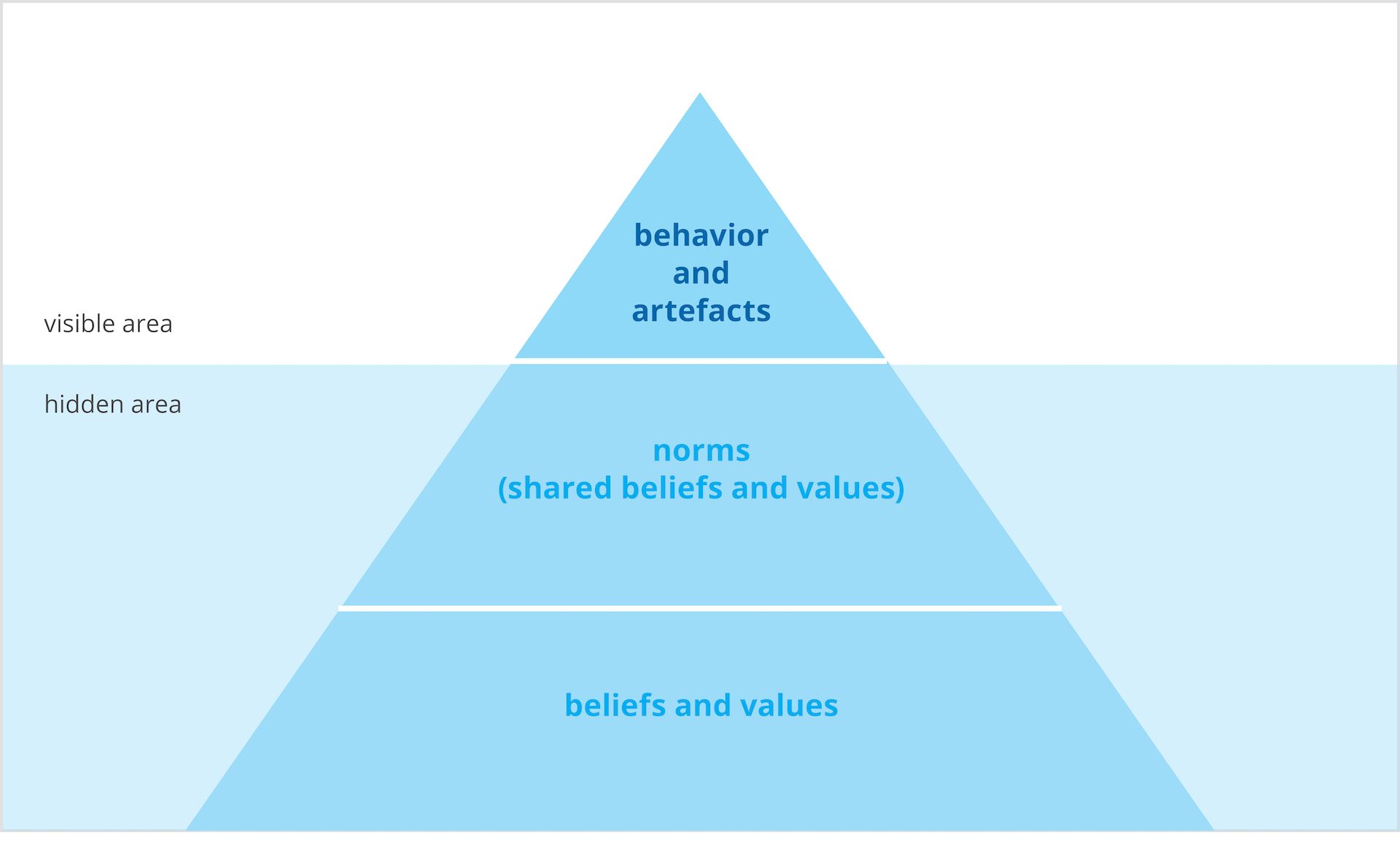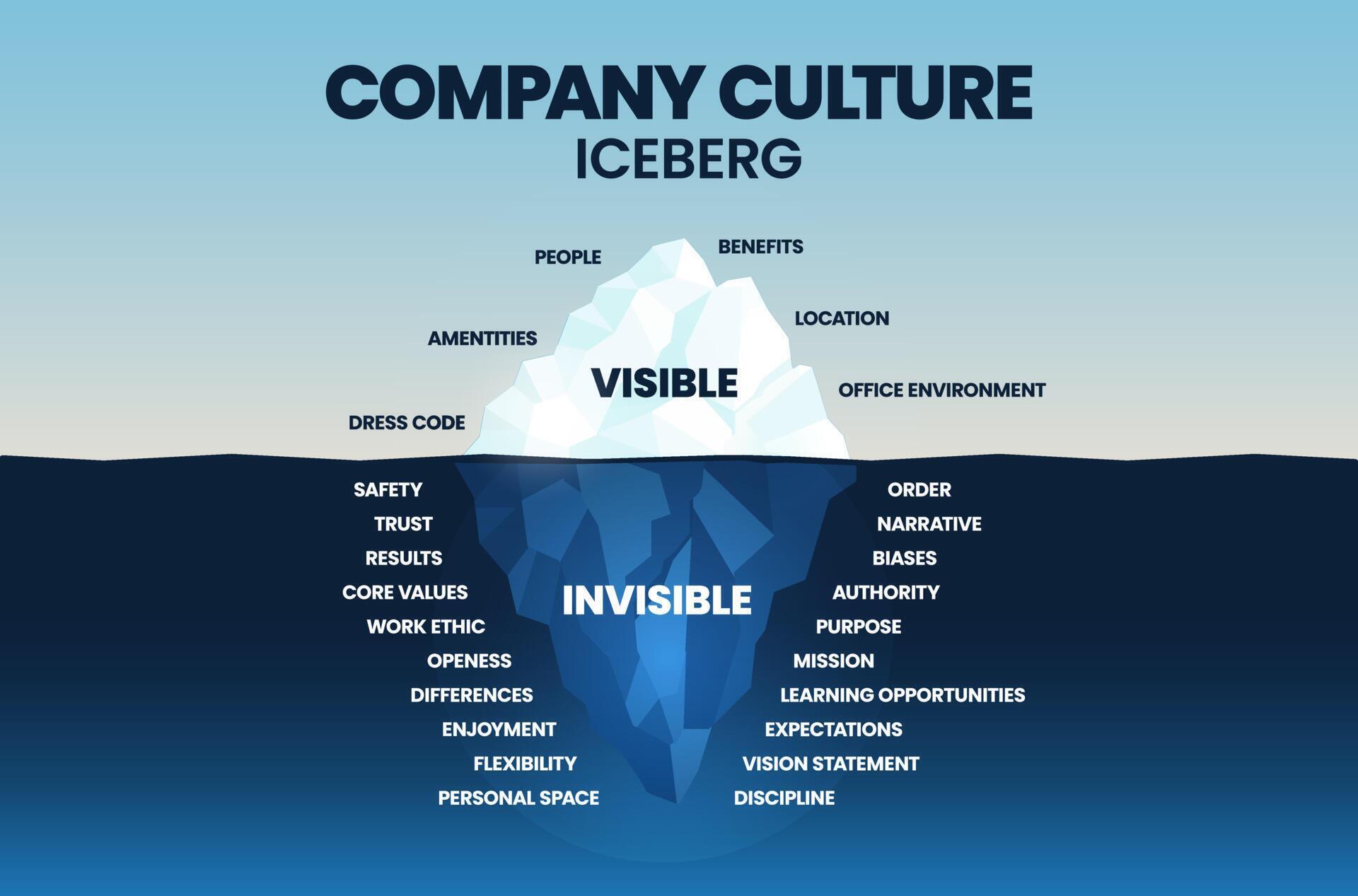
The Iceberg Model
Summary. Edgar Schein's culture model is a tool that can help you understand your organization's culture. The model says that there are three different layers to every organizational culture: At the top, we have artifacts, which sit on top of: Values, which sit on top of: Assumptions. 535.

Iceberg Model (Schein, 1985) Download Scientific Diagram
We've pioneered distance learning for over 50 years, bringing university to you wherever you are so you can fit study around your life. Take a look at all Open University courses. If you're new to university-level study, read our guide on Where to take your learning next, or find out more about the types of qualifications we offer including.

Understanding the Culture of a Company, Part 1 Surface Culture LaConte Consulting
Contents. 1 Overview of Edgar Schein's Model; 2 Applying Schein's Model in Organizations; 3 Benefits of Understanding and Managing Organizational Culture; 4 Criticisms and Limitations of Schein's Model. 4.0.1 Despite these criticisms, Schein's Model of Organizational Culture continues to be widely used and valued by practitioners and researchers alike. Its emphasis on the.

Understanding and Shaping Organizational Culture
In this video, we explain Edgar Schein's Organizational Culture Model and show a simple process for using the model, along with an example.Running order:- In.

High Involvement Innovation Innovation Culture
Edgar Schein is a former professor at the MIT Sloan School of Management in Massachusetts, USA. Also, he has worked for many years as a consultant in organis.

El modelo iceberg de la cultura de la empresa le permite medir su cultura organizacional, ayuda
Edgar Schein Model of Organization Culture. The term " Organization culture " refers to the values and beliefs of an organization. The principles, ideologies as well as policies followed by an organization form its culture. It is the culture of the workplace which decides the way individuals interact with each other and behave with people.

Resource The Cultural Iceberg Model
The upper level is artifacts and behaviors that are visible.; The middle level is espoused with less visible values.; The lowest level is basic assumptions, which occur at the unconscious level among the members, and are thus invisible.; Edgar Schein Iceberg Model or Edgar Schein Onion Model. The model is also called the Edgar Schein iceberg model. Like an iceberg, the lower part is hidden.

Edgar Schein Iceberg Model on Culture YouTube
In practice, the three levels of the Model of Organizational Culture are sometimes represented as an onion model as it is based on different layers. The outer layer is fairly easy to adapt and easy to change. The deeper the layer, the harder it becomes to adjust it. Deeply embedded in the core of the onion we find the assumptions.

Figure 2 from The role of culture in postmerger performance Semantic Scholar
A startup is like a blank canvas. The culture that forms in its early stages can set the tone for the organization's future. Implementing Schein's Iceberg Model helps founders and early team.

The iceberg model of culture reminds viewers of the complexity that culture real Cross
Schein's iceberg model (Schein, 1992) is useful in that it illustrates that some cultural aspects of an organisation are visible while some are hidden and difficult for outsiders or even new members of an organisation to interpret. Examples of visible cultural aspects include written documents - strategic plans, job descriptions and.

Understanding the Iceberg Model of Culture Xoxoday
Siew-Huat Kong . be clarified that other phenomena in culture research, such as climate, ideology, symbols, identity, and images classified in the literature (Alvesson & Berg, 1992) are not the main

the iceberg model of culture (Hall, 1976) Download Scientific Diagram
The model says that there are three different layers to every organizational culture: At the top, we have artifacts, which sit on top of: Values, which sit on top of: Assumptions. It helps to think of this as an iceberg where the artifacts are the most visible part. Just like an iceberg, only about 10% of organizational culture is easily visible.

Organizational Culture emilyschronicles
Artifacts are the visible signs of an organisation's culture. They are visible; they can be seen, heard and felt. For example, what the dress code is; what kind of offices and layout is used; how employees address each other and how they communicate internally and externally. Ed Schein is another influential writer on organisational culture.

Schein Iceberg Model Of Culture
Schein's model of organizational culture was developed in 1980 by Edgar Schein, then Sloan Professor Emeritus at the Sloan School of Management at MIT. Schein's model of organizational culture is a framework explaining the impact of company culture on an organization with a focus on learning and group dynamics. Level of Culture Description Examples Artifacts. What is Schein's Model of.

The Iceberg Model of Culture. Download Scientific Diagram
Edgar Schein's Model of Organizational Culture. Edgar Schein proposed a model of an organizational culture where the basic assumptions shape values and the values shape practices and behavior, which is the visible part of the culture. Organizations do not adopt a culture in a single day and in fact learn from past experiences and start practicing it every day thus forming the culture of the.

Edgar Schein’s Organizational Culture Model LaptrinhX
The Schein's Model of Organizational Culture is a method which aims at explaining the concept of culture and the way it affects organizations. It is a dynamic model of learning and group dynamics. It was introduced by Edgar Schein in 1980 in his endeavour to explain why people behave differently in various organizations.